AI Pest Detection: How Early Warnings Work
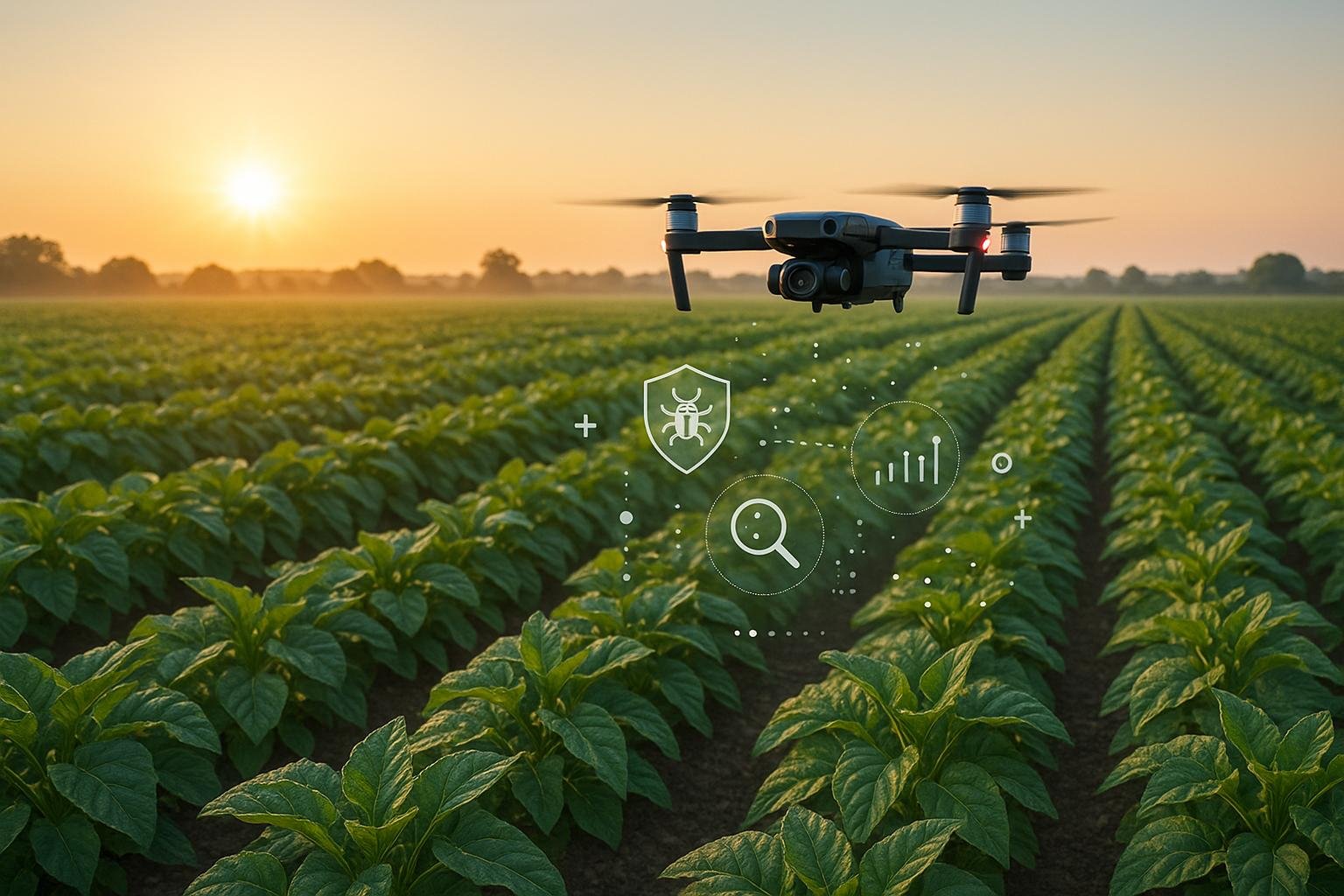
AI pest detection helps farmers and gardeners prevent crop damage by identifying pests early and predicting outbreaks. Using sensors, cameras, and machine learning, these systems analyze data like heat, movement, and sound to detect pests and suggest targeted solutions. Early warnings can reduce damage by up to 30% and minimize pesticide use, making pest control more efficient and eco-friendly.
Key Benefits:
- Real-time monitoring: Detect pests 24/7 with sensors and IoT devices.
- Accurate predictions: Machine learning models forecast outbreaks using weather, pest life cycles, and historical data.
- Reduced losses: Early action cuts crop damage by 20-40% annually.
- Lower pesticide use: Targeted interventions reduce chemical usage by up to 90%.
- Scalable solutions: Works for small gardens and large farms alike.
By combining cutting-edge AI tools with proactive pest management, these systems are transforming how we protect crops and gardens.
Technologies Behind AI Pest Detection
Sensors and IoT Devices
AI-driven pest detection relies heavily on smart sensors and IoT devices that keep a constant watch over gardens and agricultural fields. These tools gather data on factors like pest activity, temperature, humidity, and movement, transmitting this information wirelessly to central systems for analysis [7].
Modern systems are getting smarter by the day. Take Rentokil's PestConnect, for example. It uses infrared sensors to monitor facilities 24/7 and sends real-time alerts to technicians when pests are detected [7]. Similarly, the Anticimex SMART Digital Rodent Control System leverages time and frequency data, combined with algorithms, to predict rodent populations and prevent infestations before they happen [7].
This technology goes beyond simple traps. Devices like the DynaTrap Flylight with AtraktaGlo Technology and IoT-enabled agricultural systems from companies like Arable and Semios offer more advanced pest monitoring solutions [7]. These tools can automatically trigger traps or notify technicians when pests are detected, creating an efficient and responsive system.
The numbers speak volumes. According to Berg Insight, the number of active in-field monitoring and control devices for pest management is expected to hit 1.7 million by 2025 [8]. By analyzing sensor data alongside factors like weather and pest breeding cycles, these systems can predict pest outbreaks before they cause serious harm [6].
"I think we are taking the first baby steps into the world of smart sensors and traps, but this year will see them become more mainstream. The time savings and professionalism they offer are just too good to avoid. We are just at the beginning, but I'm so excited to see what comes next." - Michael Broder [9]
These sensors and IoT devices set the stage for the AI algorithms and remote monitoring techniques discussed in the next sections.
Machine Learning and AI Software
The real brains behind AI pest detection are machine learning algorithms. These systems process massive amounts of data from sensors, cameras, and environmental monitors to detect patterns and make accurate predictions [11]. They can analyze images of crops, identify pest damage, and even differentiate between pest species with impressive precision.
For example, Convolutional Neural Networks (CNNs) and YOLOv5 models have excelled in image analysis, achieving up to 98.17% accuracy in identifying crop pests in real-world settings and 96% accuracy for greenhouse pests like aphids, whiteflies, and thrips [10] [3].
But it’s not just about visuals. Sound-based detection systems, powered by Multilayer Perceptron (MLP) algorithms, can identify up to 800 pest species with 99.78% accuracy [3]. A practical example of this is an Android app developed by Tamil Nadu Agricultural University, which detects fall armyworms in maize crops with 93.47% validation accuracy [3].
These technologies are already making a difference. Semios, a precision farming platform partnered with Google, used AI to cut a moth population by 1.5 billion, which led to a boost in almond production. Meanwhile, Blue River Technology's smart sprayer uses AI-driven image recognition to reduce herbicide use by up to 90%, compared to traditional methods [3].
As machine learning models continue to evolve, incorporating techniques like transfer learning and explainable AI, they become better at adapting to different agricultural conditions and delivering more actionable insights [10].
Remote Sensing and GIS Mapping
When it comes to large-scale pest management, remote sensing and GIS mapping are indispensable. Satellite imagery provides a comprehensive view of agricultural areas, enabling early detection of crop stress - sometimes even before visible symptoms appear [13].
One key tool in this space is the Normalized Difference Vegetation Index (NDVI), which measures plant health by assessing stress levels, vigor, and potential yield. This data helps pinpoint areas where pest infestations might be developing, making monitoring faster and more cost-efficient, especially over large regions [13] [12].
GIS technology adds another layer of precision by enabling farmers to create detailed maps. These maps integrate data on soil, topography, crop yields, and pest populations, making it easier to decide where to focus pest control efforts [14]. GIS also helps track pest management activities, like spraying or trapping, by providing accurate location data. For instance, officials in Tulare County, California, used GIS and a Mobile Data Collection app to set up precise data systems for monitoring the Asian Citrus Psyllid, effectively curbing its spread [16].
Considering that insect pests cause 20% to 40% of annual agricultural production losses worldwide, the importance of these technologies cannot be overstated. Over the past decade, studies on using remote sensing for pest monitoring have steadily increased, reflecting the growing recognition of its benefits [15].
How Real-Time Monitoring and Alerts Work
Data Collection and Analysis
Real-time pest monitoring begins with gathering data from a variety of sensors working in harmony. These systems utilize cameras, thermal sensors, fluorescence detectors, acoustic monitors, and gas sensors to track heat signatures, movement, sound frequencies, plant health changes, and volatile compounds released by pests [17].
AI algorithms then process this constant stream of data, filtering out background noise and pinpointing pest-specific patterns with impressive speed - 16 to 29 frames per second - and accuracy rates between 96% and 99.65% [17].
In December 2024, Mouser Electronics demonstrated this in action with their IoT pest-detection system. It combined Arduino Nicla Vision camera modules, Würth Elektronik Thyone-I radio modules, and cellular gateways. Using the Edge Impulse platform, the system trained AI models directly on sensor nodes, enabling on-the-spot data processing instead of relying on cloud computing [5].
This shift to edge computing - powered by TinyML technology - has transformed pest monitoring. Processing data locally on sensor nodes not only cuts down on power usage but also improves response times. This is critical, considering farmers lose as much as 40% of their crops to pests and diseases annually, with invasive insects alone causing at least $70 billion in global losses each year [5].
To maximize efficiency, sensors are strategically placed in high-risk areas, ensuring a thorough detection system [17].
TMA Solutions showcased this integrated approach with their T-Pest system, deployed in Bình Định Province, Vietnam, in December 2024. This setup uses high-resolution cameras, UV light, and environmental sensors to track 7 types of rice diseases and monitor 8 harmful insects. Leveraging an improved YOLOv5-Ghost AI model, their field trials achieved accuracy rates exceeding 80% [3].
Once the data is processed, it transitions seamlessly into real-time alerts, enabling quick action to control pest threats.
Creating Alerts for Action
Once the system identifies potential pest threats, it immediately sends out detailed alerts. AI analyzes sensor data against predefined patterns and thresholds. If pest activity crosses these benchmarks or matches known infestation signs, the system triggers notifications. These alerts provide specifics such as pest type, location, severity, and suggested actions, and they’re delivered through mobile apps, emails, or web dashboards [18].
For instance, Project Tithonus uses YOLOv5 to analyze pest images in real time and integrates with the CallMeBot API to send instant alerts to users [18].
Trapview, a system developed by a Slovenian company, takes this concept further by using pheromone traps that photograph captured insects. AI then evaluates these images to predict pest spread patterns in real time, enabling technicians to act swiftly with targeted solutions [1].
Another example is FarmSense, which combines insect and environmental data. Their sensors upload this data to the cloud, where AI processes it to offer personalized recommendations, like the best times to spray for pests such as navel orangeworms [1].
The Anticimex SMART Digital Rodent Control System highlights how continuous monitoring improves alert accuracy. By using digital traps and sensors, it tracks rodent activity over time, creating trend curves to predict nearby rodent populations. This allows for proactive rather than reactive pest control [1].
Mitch Goldstein, Director of Sales at Skyhawk Trapmate, emphasizes the importance of instant alerts:
"The Skyhawk Trapmate Hub connects our advanced sensor technology with real-time data analytics, providing instant alerts and comprehensive insights. This allows users to take immediate action and significantly reduces the time between detection and resolution." [19]
The demand for such smart pest monitoring solutions is growing rapidly, with the market expected to reach $1.5 billion by 2030, expanding at a 6.5% annual growth rate from 2024 to 2030 [20].
How Weather Affects Predictions
Weather data plays a key role in improving the accuracy of AI pest prediction models. By analyzing temperature, humidity, rainfall, and historical weather trends alongside pest life cycle information, these systems can forecast outbreaks with greater precision [1].
Environmental factors like relative humidity, rainfall, soil moisture, and nutrient levels directly influence pest behavior and reproduction. Climate change further complicates this, altering weather patterns and impacting both crop production and pest growth [22].
For example, researchers at the University of California developed an AI system to predict Western grape leafhopper outbreaks. By combining weather data with historical infestation records, they achieved highly accurate pest activity forecasts, enabling farmers to prepare in advance [21].
In Australia, the Commonwealth Scientific and Industrial Research Organisation (CSIRO) created the "Pest Forecast" platform. This system uses machine learning to analyze weather forecasts and historical data, offering farmers insights to shift from reactive to proactive pest management [3].
Research in the Philippines highlights how specific weather elements, such as solar radiation and dew point, significantly influence the accuracy of pest prediction models [22]. These findings underscore the need for location-specific approaches when developing AI-driven pest management systems.
Given that pests and diseases cause 20–40% of global crop production losses annually - costing over $220 billion - integrating weather data into pest prediction systems could yield massive economic benefits [23].
As one expert explains:
"AI algorithmically processes vast amounts of data, such as weather patterns, pest life cycles, and past outbreaks, to generate predictive models." [1]
Benefits of AI-Powered Early Warning Systems
Reducing Crop Losses and Pesticide Use
AI-powered early warning systems offer a win-win for gardeners and farmers: they help catch pest problems before they escalate while cutting down on chemical usage. By enabling precise timing and targeted action, these systems minimize the need for blanket pesticide applications.
Take smart sprayer systems, for example. These tools focus on specific infestations, reducing herbicide use by as much as 90% [1]. The results? Substantial drops in pest populations and improved crop yields [1].
Field tests conducted by AgZen revealed that their feedback-optimized spraying technology could cut pesticide requirements in half while boosting crop productivity. Some pilot customers even reported saving up to 50% on chemical costs when used on a large scale [25].
This approach fundamentally changes the economics of pest management. Instead of treating crops preemptively with broad-spectrum chemicals, farmers can now wait for confirmed threats and address them with pinpoint accuracy.
Better Efficiency and Eco-Friendly Practices
AI is revolutionizing pest control, transforming it from a manual, guesswork-heavy process into a streamlined, automated system that operates 24/7. For example, AI-driven irrigation systems can reduce water waste by up to 50% [4].
By replacing broad pesticide spraying with targeted interventions, these systems not only eliminate harmful pests but also protect beneficial insects like bees and butterflies. Additionally, AI-powered apps are stepping in to provide personalized guidance. These apps can diagnose plant diseases and pest issues from uploaded photos, suggest ideal planting schedules, and even recommend companion planting - like pairing tomatoes with basil to naturally deter pests [4].
This shift toward smarter, more efficient practices is opening doors to strategies that work for gardens of all sizes.
Adapting to Different Garden Sizes
One of the standout features of AI pest detection systems is their scalability. Whether you're managing a backyard garden or a sprawling farm, these tools make advanced pest management accessible across the board.
For small-scale gardeners, smartphone apps are a game-changer. Upload a photo of a pest problem, and the app analyzes it alongside local weather data and seasonal pest trends to offer immediate treatment suggestions.
For large-scale farms, AI integrates data from satellites, drones, and ground sensors to monitor vast areas effectively [3]. A corn farmer in Iowa, for instance, can track pest activity across multiple fields, while an almond grower in California can time interventions precisely over hundreds of acres.
Another major advantage is climate adaptation. AI systems utilize climate data to anticipate how pests will behave under changing conditions, helping growers tailor strategies to their specific regions [23]. A study by Gopinath et al. demonstrated how an AI framework could distinguish between healthy and diseased leaves in crops like bananas, peppers, potatoes, and tomatoes [26].
Given that pests and diseases cause annual crop losses of 20% to 40%, amounting to over $220 billion globally, even small improvements in pest detection can lead to significant economic benefits [23].
As agricultural expert Aldo Leopold once said:
"Agricultural science is largely a race between the emergence of new pests and the emergence of new techniques for their control." [24]
With AI-powered early warning systems, gardeners and farmers gain a critical edge in this ongoing battle.
sbb-itb-4d6a8dd
🚀 Ready to Reinvent Your Garden?
Join thousands of homeowners who have transformed their gardens using our AI design tool. Upload one photo to explore endless possibilities.
Get your AI garden designs →Weather based Pest Prediction Overview

Using AI Pest Detection with Garden Planning
AI pest detection is transforming gardens into more resilient ecosystems by shifting pest control from a reactive to a proactive approach. This shift makes it easier to incorporate Integrated Pest Management (IPM) strategies directly into garden planning.
Supporting Integrated Pest Management (IPM)
AI pest detection plays a central role in modern Integrated Pest Management (IPM) by seamlessly combining biological, cultural, and chemical controls through precise, data-driven interventions. Instead of relying on routine pesticide applications, AI systems analyze historical data - such as weather trends, pest behavior, and infestation rates - to predict outbreaks before they happen [27].
Platforms like Trapview and FarmSense demonstrate this integration by delivering real-time data that allows gardeners to respond proactively. For example, these systems can guide the timely release of beneficial insects or suggest cultural adjustments, minimizing the need for chemical treatments [1][3].
One of AI’s biggest strengths in pest management is its ability to integrate various strategies. For instance, AI can pair pheromone traps with remote monitoring sensors, creating a dual-purpose tool that tracks pest populations while reducing their numbers [27]. This results in fewer pesticide applications, better-timed biological controls, and improved cultural practices like companion planting.
Climate-Smart Gardening
As climate change continues to alter pest patterns across the United States, traditional pest control methods are becoming less reliable. AI systems are stepping in to analyze factors like temperature, humidity, and seasonal changes, helping gardeners predict pest activity in a changing climate [3]. This predictive power supports the development of gardening strategies that adapt to emerging threats.
Climate-smart gardening also includes making informed plant choices. AI tools can recommend pest-resistant plant varieties suited to your specific microclimate and suggest companion plants that naturally deter pests. By combining these recommendations with advanced garden design tools, gardeners can create a more holistic and adaptive approach to pest prevention.
How AIGardenPlanner Improves Garden Planning
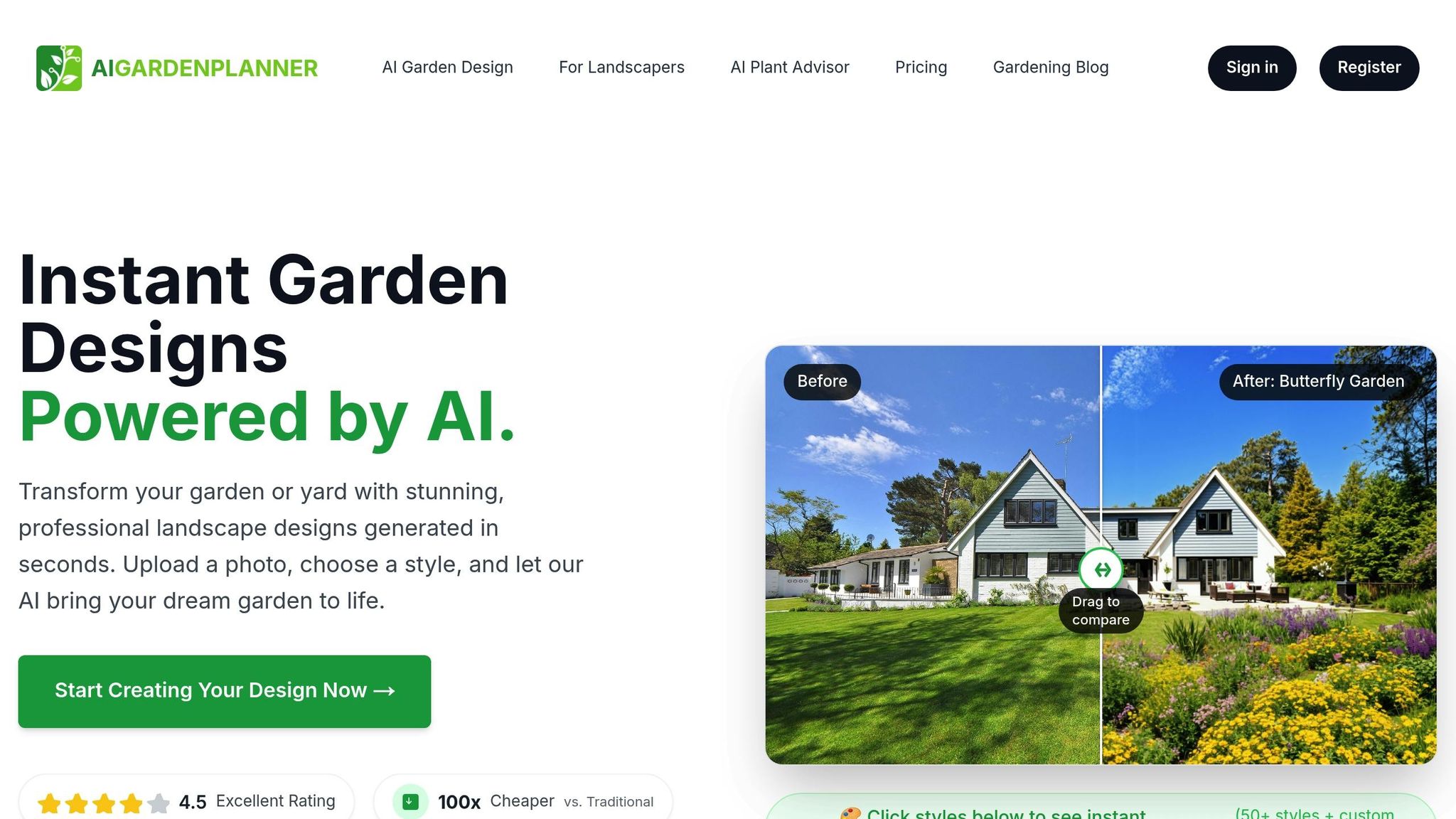
AIGardenPlanner connects AI pest detection with garden design, helping gardeners create layouts that naturally reduce pest issues. By analyzing a garden photo, local climate data, and ZIP code, the platform suggests pest-resistant plant varieties and companion plants, offering over 50 design styles for a more resilient garden.
The AI Plant Advisor feature uses your ZIP code and local climate information to recommend plants that are naturally resistant to pests in your area. For instance, if aphids are a common problem in your region, it might suggest marigolds or nasturtiums, which are known to repel them.
Additionally, the platform provides detailed growing guides and maintenance schedules, ensuring that pest monitoring and interventions happen at the right time. These location-specific suggestions work hand-in-hand with AI pest detection, not just to respond to threats but to prevent them from becoming issues in the first place.
Whether you’re a home gardener or a professional landscaper, AIGardenPlanner offers a comprehensive solution that combines visually appealing designs with practical pest prevention strategies.
Conclusion
AI-powered pest detection is changing the way we tackle garden health and crop protection. By blending sensors, machine learning, and real-time monitoring, AI is shifting pest management from being reactive to proactive.
Key Takeaways
Let’s look at some key points that illustrate how AI is reshaping pest management. Early detection systems can significantly reduce global agricultural losses, which currently range between 20% and 40% annually due to pests and diseases [28]. For example, John Deere's See & Spray system has reduced herbicide use by up to 77% without compromising crop yields [29].
Efficiency and precision are at the heart of AI-driven systems. Blue River Technology’s smart sprayer, for instance, minimizes herbicide use by as much as 90% by targeting problem areas only [1]. Similarly, CropX’s AI algorithms have cut water usage by 25% to 50% while maintaining or even improving yields through optimized irrigation schedules [2].
AI doesn’t stop at pest detection - it integrates with tools like AIGardenPlanner to create a more holistic approach to gardening. These platforms analyze local climate data and recommend suitable plant varieties, helping gardeners design resilient gardens from the start. This proactive strategy supports integrated pest management and promotes climate-smart gardening practices.
Data plays a central role in these advancements. As AI expert Inupa Bandara puts it:
"Data is the backbone of AI" [24].
By analyzing weather patterns, pest life cycles, and environmental factors, AI empowers gardeners and farmers to make smarter, more informed decisions about when and how to act.
The Future of AI in Pest Management
The future of AI in pest management promises even smarter and more accessible solutions. Current systems can already identify over 90% of common crop pests with impressive accuracy [30]. Niqo Robotics, for instance, has deployed AI camera technology across more than 90,000 acres, cutting chemical usage by up to 60% and benefiting over 1,800 farmers in India.
Emerging technologies are pushing these boundaries further. Edge computing and small-satellite constellations are making real-time decision-making possible, even in remote areas. Remote sensing tools can now monitor up to 100 acres per hour for early pest infestations, enabling practical and cost-effective large-scale monitoring [30].
As climate change reshapes ecosystems, the role of AI becomes even more critical. Researchers M. Demirel and N.A. Kumral explain:
"Because of climate change, the outbreaks of existing pests are increasing or they become the main pests in areas where they did not cause problems before" [24].
AI systems are uniquely equipped to adapt to these shifts by continuously learning from new data patterns.
The merging of AI with biotechnology is also accelerating. This convergence is paving the way for more targeted, environmentally friendly pest control methods. These innovations not only improve yields but also align seamlessly with the climate-smart gardening practices mentioned earlier. Future systems will go beyond detection to predicting and refining interventions with pinpoint accuracy.
For both gardeners and farmers, the takeaway is clear: AI pest detection is paving the way for more resilient, adaptable, and productive growing systems that are ready to meet the challenges of a changing world.
FAQs
How does AI pest detection work with current pest management for gardens and farms?
AI-powered pest detection is transforming how we manage pests by combining advanced algorithms, sensors, and cameras to identify them quickly and accurately. This early detection means farmers and gardeners can take action sooner, cutting down on unnecessary chemical use and preventing significant crop damage.
In small gardens, AI simplifies pest monitoring and treatment, helping plants thrive with minimal effort. On larger farms, these systems deliver scalable, automated surveillance and smarter pest control methods, leading to healthier crops and higher yields. By working alongside traditional techniques, AI systems make pest management more precise and efficient.
How does weather data improve the accuracy of AI pest detection systems?
Weather data is a game-changer for improving the precision of AI-driven pest detection systems. Factors like temperature, rainfall, and humidity have a direct impact on how pests behave, reproduce, and migrate. By weaving this information into AI models, predictions about pest outbreaks become much more reliable.
Take temperature, for instance - rising levels can mark the beginning of a pest's active season. Similarly, heavy rainfall might create the perfect environment for certain pests to thrive. By analyzing these conditions in real time, AI systems can issue timely alerts, enabling gardeners and farmers to act quickly and safeguard their plants and crops.
How do AI-powered early warning systems help make agriculture more sustainable and eco-friendly?
AI-driven early warning systems are transforming agriculture by identifying pest threats early and allowing for precise interventions. Leveraging tools like sensors, satellite imagery, and thermal imaging, these systems provide real-time monitoring and predict potential pest outbreaks before they become severe.
This approach significantly reduces the reliance on broad pesticide application, cutting down on chemical use, conserving water, and safeguarding biodiversity. The result? Healthier ecosystems, improved crop productivity, and farming practices that are better equipped to handle long-term climate challenges.
🎨 Visualize Your Dream Garden Today!
Transform any outdoor space into a professional landscape design in minutes. Just upload a photo, choose your style, and let our AI do the rest.
Start your garden transformation now →Related posts
Related Articles

How AI Predicts Frost Risks for Seasonal Planting
AI enhances frost prediction for farmers, allowing for precise planting schedules and reduced crop losses through actionable insights.
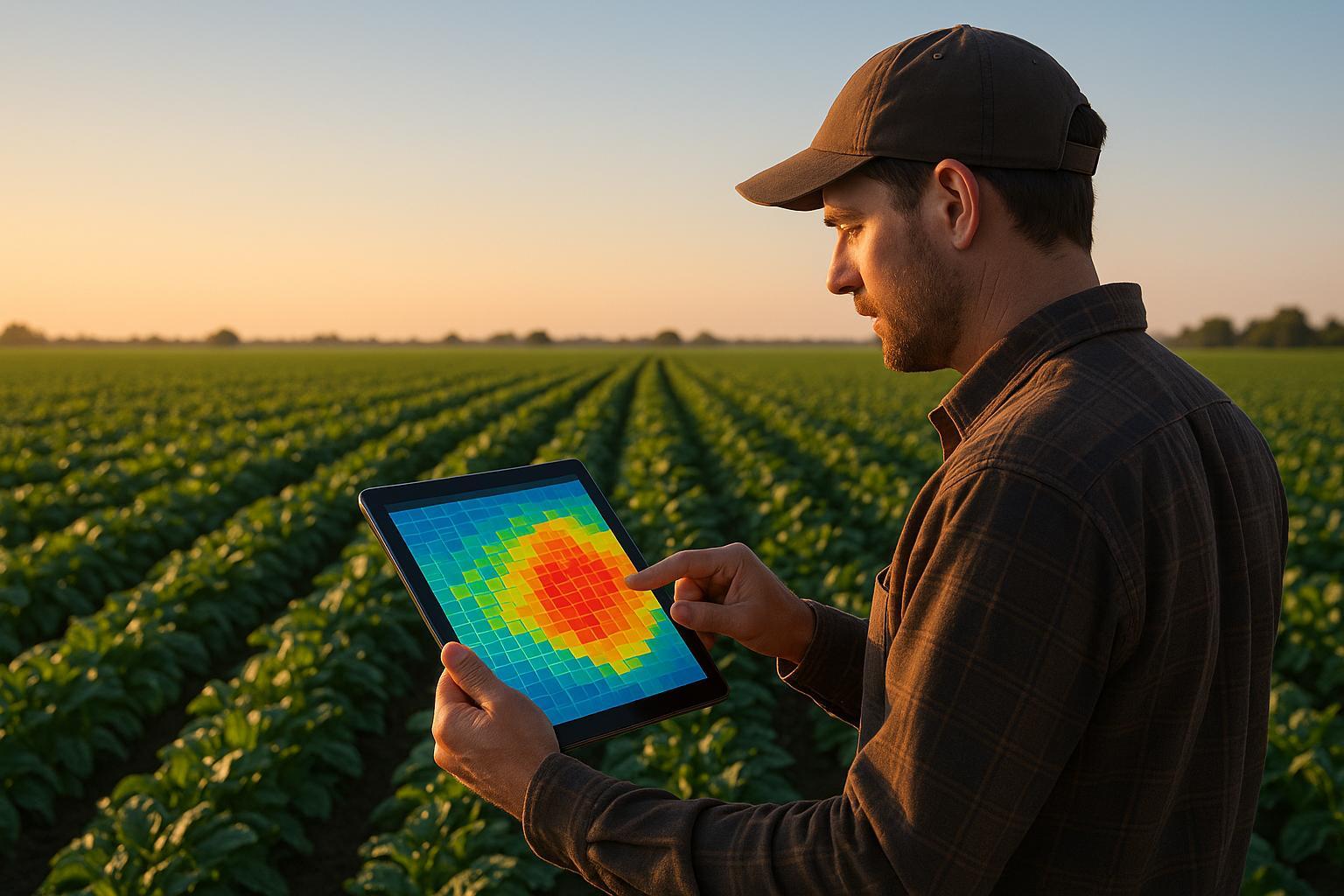
Growing Degree Days: AI's Role in Pest Control Timing
Explore how AI and Growing Degree Days enhance pest control timing, reducing pesticide use and increasing crop yields for sustainable agriculture.
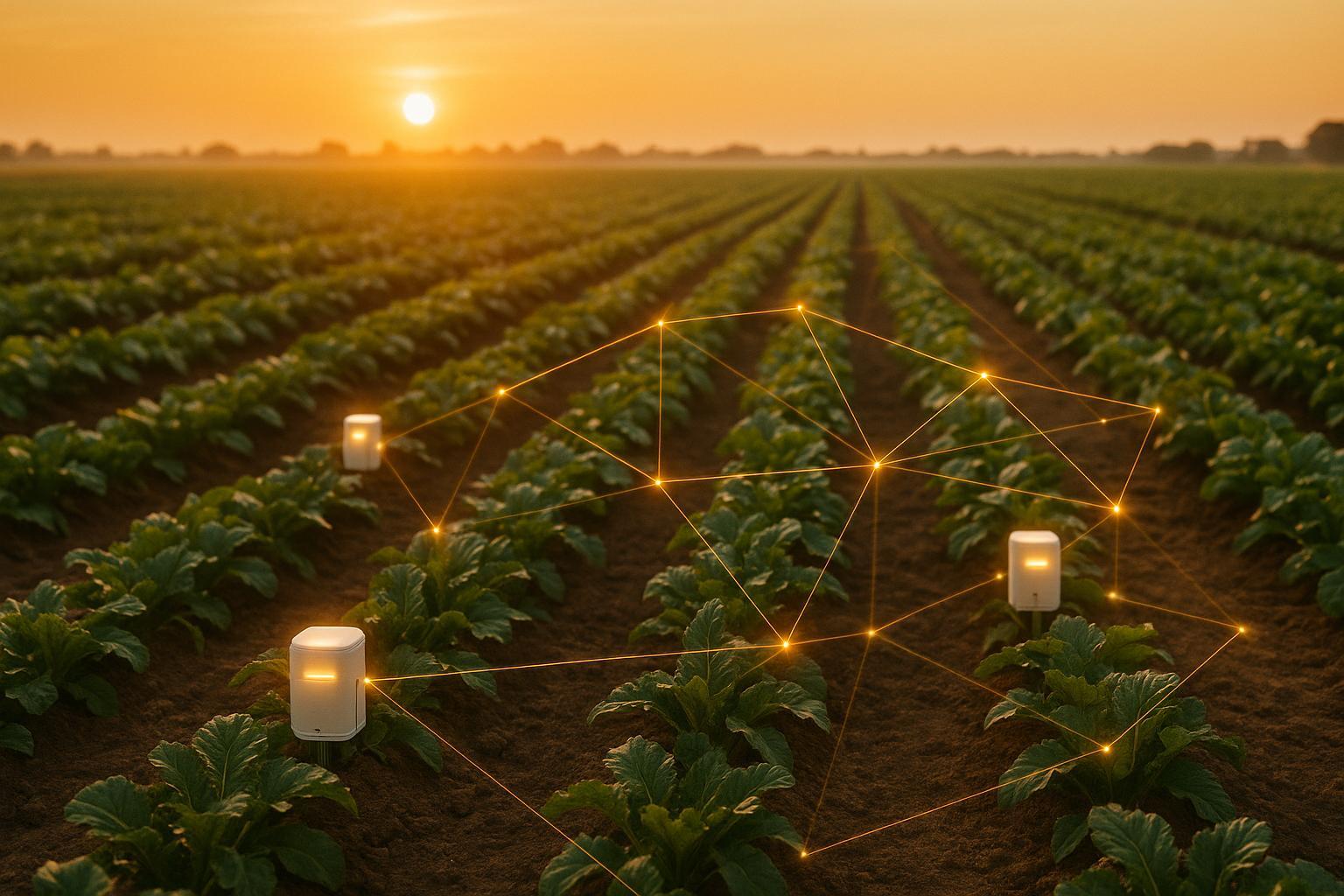
IoT Pesticide Networks: Data Security Risks
Explore the cybersecurity risks facing IoT pesticide networks in agriculture and discover effective strategies to enhance data security.
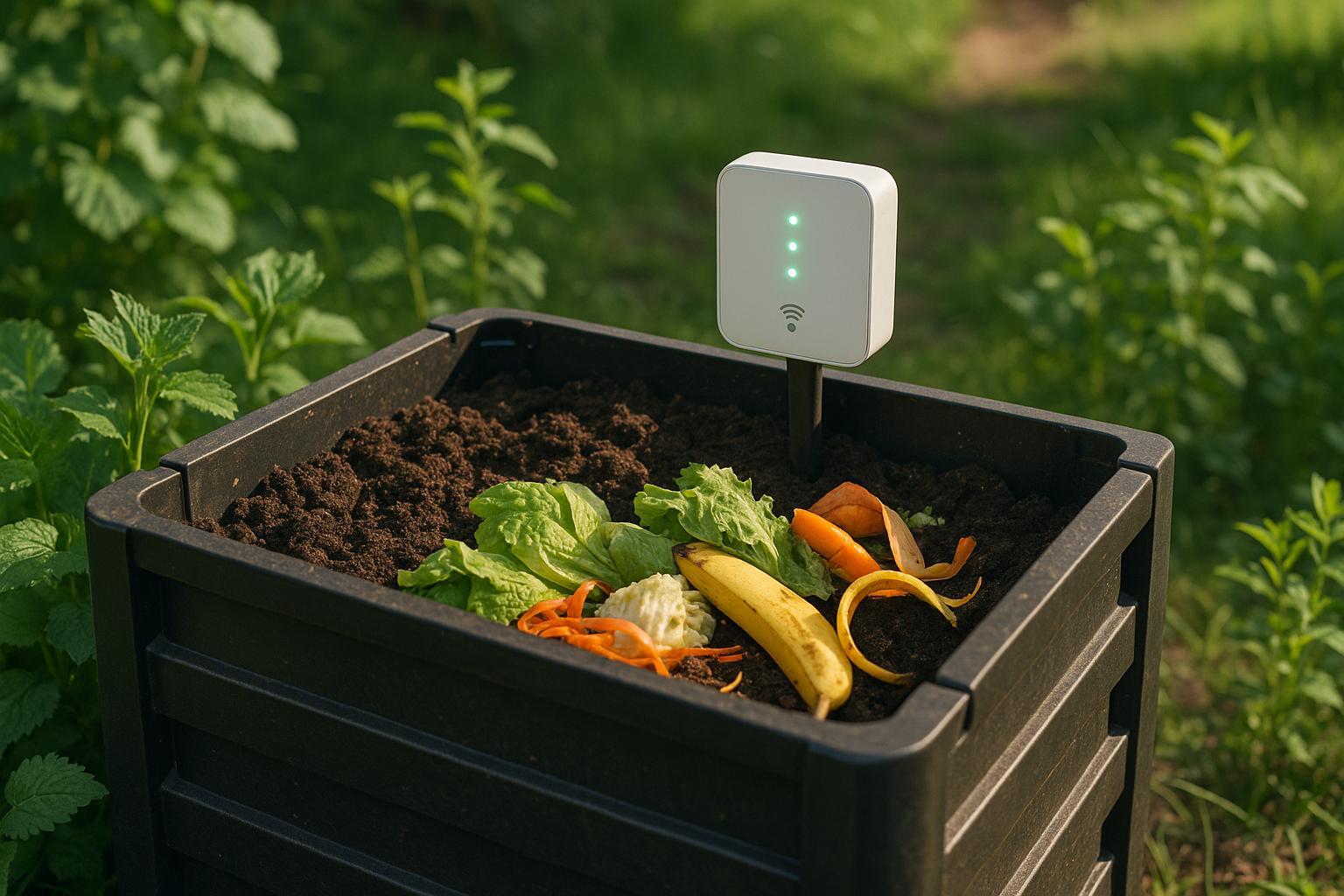
Predictive Analytics for Compost Efficiency
Explore how predictive analytics enhances composting efficiency and quality through real-time data monitoring and machine learning techniques.

AI in Pest Control: Biological and Chemical Integration
Explore how AI is revolutionizing pest control by integrating biological and chemical methods for more efficient, sustainable farming.
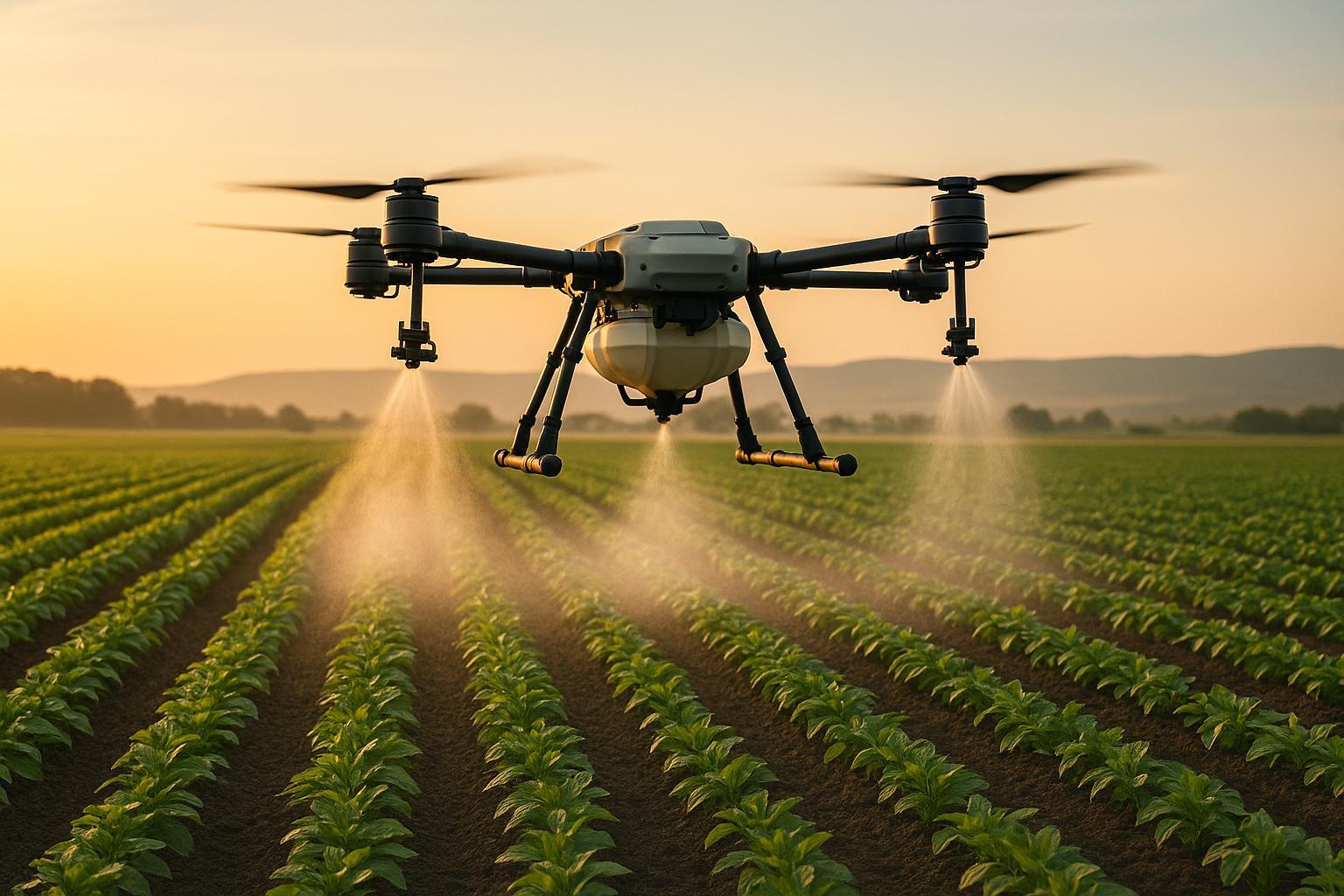
Precision Spraying: AI Drift Reduction Tips
Explore how AI technology enhances precision spraying in agriculture, reducing pesticide drift and improving efficiency for sustainable farming.